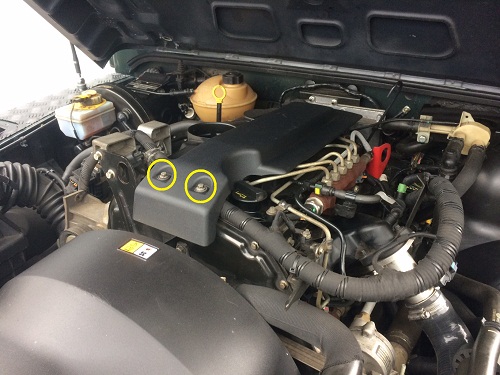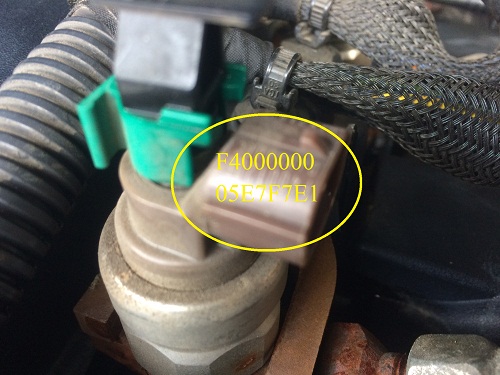Lift the bonnet and remove the two 8mm headed bolts holding the plastic engine cover on, located on the front edge of the cover circled in Yellow.
Injectors are numbered from front to back, Number 1 is at the front, and number 4 is at the back/bulkhead end of the engine.
Each injector has its own unique code, this code is used by the engine management as part of the fueling control and must be entered correctly into the diagnostic tool.



